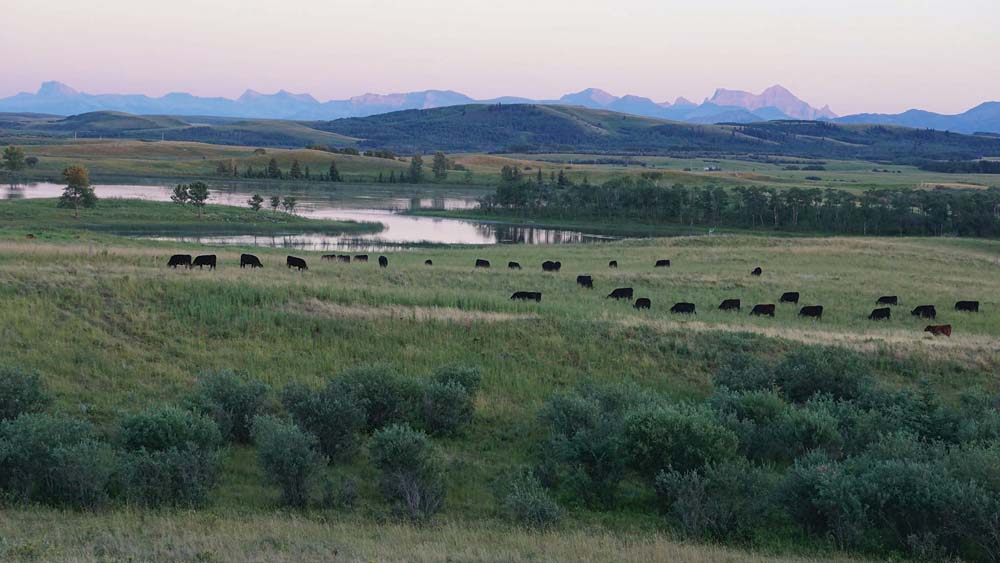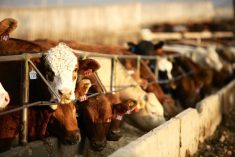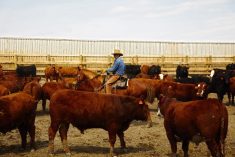There have been a few small hiccups but unlike much of the ag sector, the cattle market has been blissfully uneventful in recent months.
“Calf prices are generally higher than a year ago. We’re seeing our calf and feeder prices 15 to 20 cents higher than a year ago, which is pretty positive,” said Brian Perillat, manager and senior analyst with Canfax.
The sector is being affected by China, but in a positive way — as African swine fever has decimated its hog herd, the country is looking for sources of protein, which could include beef.
Read Also

Horns aren’t unlocking anytime soon on livestock transport standards
Standards good enough meet the definition of “humane” animal transportation still vary widely between what what industry wants, what animal rights advocates want and, between the two, what federal regulators decide is good enough.
“China has half the pigs in the world and they are dying like crazy. That’s going to create some demand for meat,” said Perillat. “How much will be beef is still the question.”
China may not directly buy Canadian beef — both because of politics and that ractopamine is used in some cattle during finishing. But by ramping up purchases from countries such as Australia, New Zealand and Uruguay, beef that used to come to Canada is now being diverted to China.
“It’s indirectly impacting us that way,” said Perillat. “Time will tell how hungry they get for meat.”
Meanwhile, reduced tariffs under the Trans-Pacific trade deal have seen exports to Japan double since the start of the year. Canadian tariffs into Japan have fallen from 38.5 per cent to 26.5 per cent.
“They dropped a little bit more in April and they’re continuing to decline,” he said. “We’ve got a pretty big advantage to the U.S. going into Japan right now.”
The futures market has generated some pretty strong prices, and that’s currently supporting the current calf and feeder market. Fed calf prices have been kind of flat.
“We’ve been around $1.60 for a fixed year price, and maybe a little higher than a year ago,” he said.
Feedlots have not been marketing a lot of money, and may even be losing a little.
“We expected the first-quarter prices in Western Canada to be quite strong, and really, they’ve been a bit disappointing,” said Perillat, noting fed cattle had been selling at a premium against American but the traditional discount has now returned.
But overall, cattle prices are above where they were a year ago.
“They’re still historically fairly strong and exports look good. One of the challenges we have is that basis level.”
Even though exports have increased and beef demand has also increased, fed cattle prices haven’t performed quite as well. Overall, North America has added 2.8 million cattle and no slaughter capacity.
“The beef markets have been good, but cattle markets have been mediocre,” said Perillat. “Same as culled cows. We’ve been butchering a lot of cows and prices there are below a couple of years ago.”
The herd shrunk last year because of the dryness in southern Alberta and Saskatchewan, contracting by about one per cent. Heifer retention was down because pastures were dry, feed was tight, and forage more expensive.
“We did see more cows go to town and unfortunately, our cow herd has been shrinking. We’re at the smallest beef cow herd since 1991.”
That small herd could present some problems, such as producing the volumes that packers need to operate efficiently. But that’s not the case right now.
“We’re finishing more cattle here, we’re processing more cattle here than we have in recent years,” said Perillat. “Last year, our slaughter was the biggest since 2010. We’ve exported less cattle and we imported cattle to feed in Canada. All in all, the industry is functioning well and being quite competitive.”
Perillat is hoping there will be relief in the feed prices as more barley gets planted in the place of canola.
“The Canadian dollar is a wild card. If it stays around this 75-cent range, that’s generally positive for the cattle industry,” he said. “If the dollar goes up to 80 cents or above, that does take quite a bite out of our prices.”
















